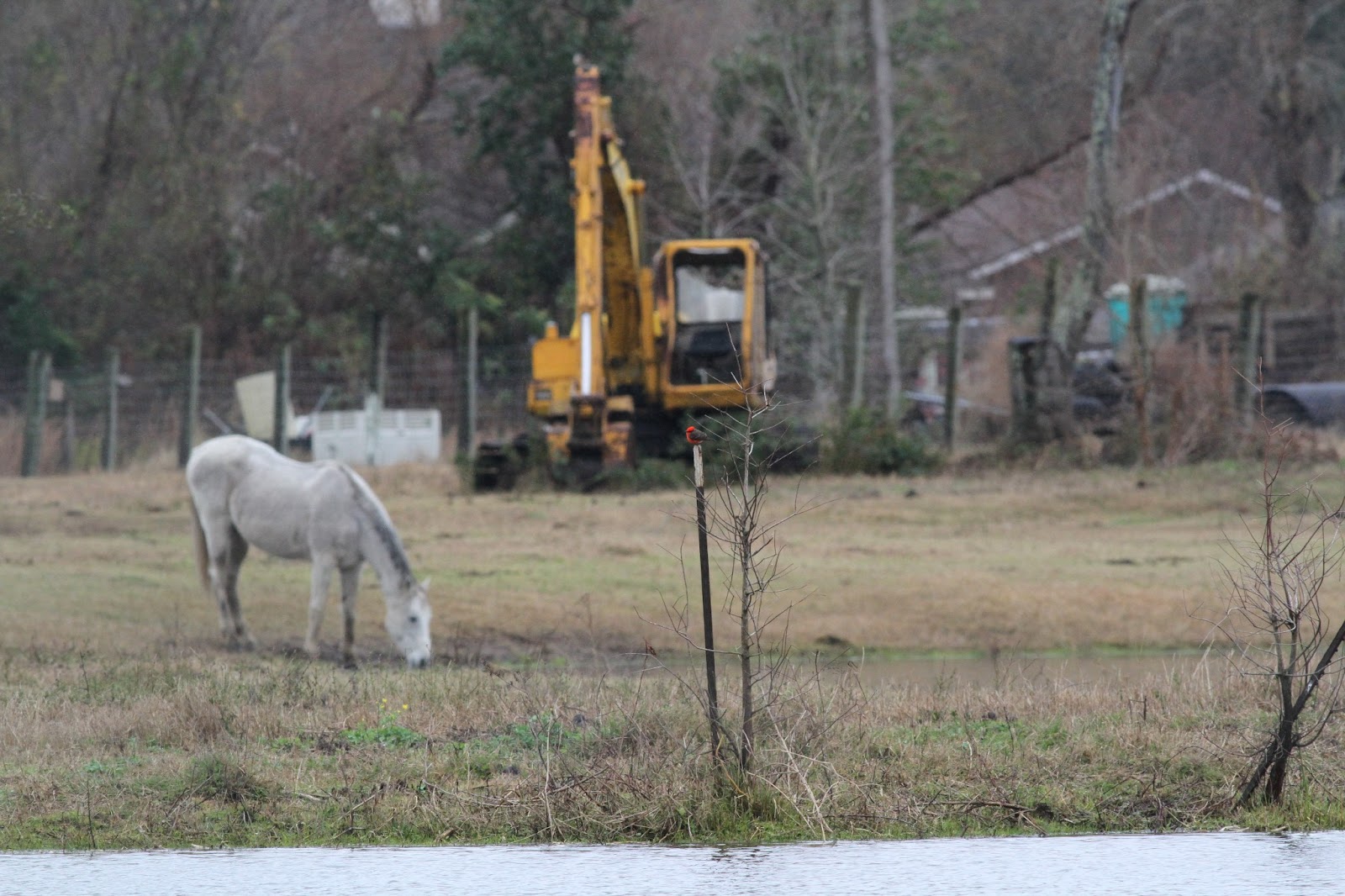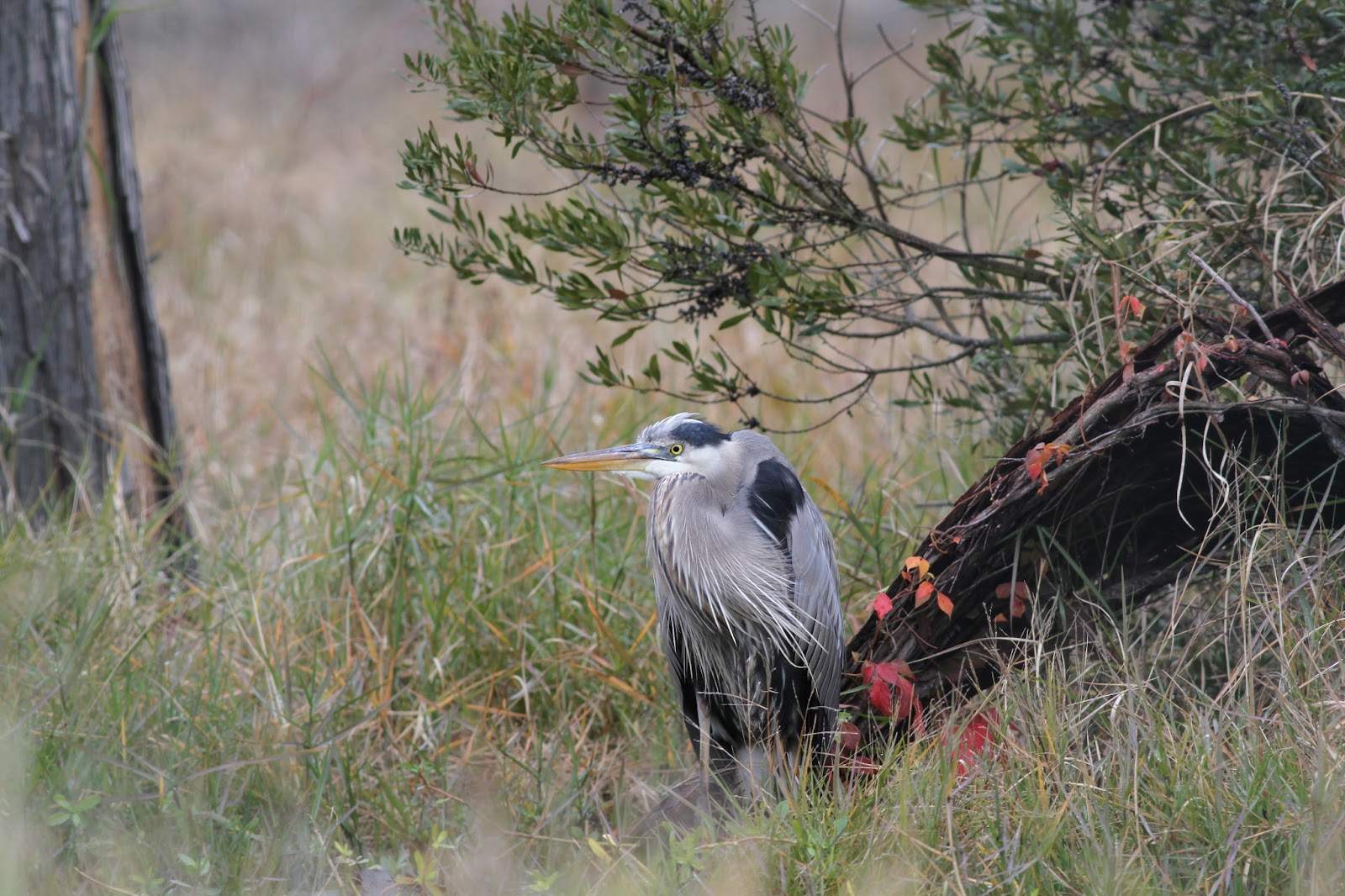Today I set out with a car full of people ready to go on a search for a few specific birds. I had found reports for Sprague's Pipit and Razorbill about an hour and a half away in Alabama that were less that a week old. We found a huge open field with muddy roads running through it where the Pipit's had been reported. Sadly we didn't find any Sprague's Pipits, but we saw around 50 American Pipits, a lifer for me, which still made the trip well worth it. We also got great looks at Northern Harriers, a Cooper's Hawk, a Sharp-shinned Hawk, and an American Kestrel. The Savannah Sparrows weren't camera shy at all today, but the rest of the birds at the fields sure were!
Three very differently colored Savannah Sparrows
Next, we went to find a Razorbill off of a pier only a few minutes away. When we got to the pier, the haze over the ocean was fairly thick, as well as there being a charge to walk out onto the pier. We all decided to pass on this because we could hardly see anything in the distance through the haze. I did happen to take a few pictures of a Sanderling hanging out under the pier.
The final part of our plan was to check out Dauphin Island, which is off the coast of Alabama and can provide a great spot to find many birds, especially sea ducks and shorebirds. When we got onto the island we couldn't make it to the Audobon sanctuary because of a parade. We were all pretty bummed that we couldn't bird the more anticipated part of our trip, but we decided to explore little sections of Google Maps that appeared green in the area. We found a nice little park with Blue-gray Gnatcatchers, Red-breasted Nuthatches, Bluebirds, Cedar Waxwings, and a House Finch.
Red-breasted Nuthatch from a few different angles
Eastern Bluebird
Brown Pelican
On the drive back along the bridge and peninsula to the mainland we decided to stop to see if we could scrounge up any final birds for the day. The sun was already setting so the pictures are a little dark. All in all it turned out to be a pretty fun day exploring some birding hot spots, and seeing a couple life birds, even if I couldn't get any pictures worth sharing.
This Great Blue Heron flew in and cleaned his bill for the camera.
A Ruddy Turnstone with an injured leg.
Close up with a Ring-billed Gull

































